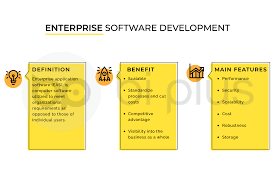Mastering Agile Software Engineering: A Guide to Efficient Development Practices
The Power of Agile Software Engineering
Agile software engineering is a methodology that has revolutionized the way software development projects are approached. It emphasizes flexibility, collaboration, and continuous improvement to deliver high-quality products efficiently.
Key Principles of Agile Software Engineering
- Iterative Development: Agile teams break down projects into small, manageable tasks and deliver working software in short iterations.
- Collaboration: Cross-functional teams work closely together, fostering communication and teamwork.
- Adaptability: Agile processes allow for changes to be incorporated throughout the development cycle based on feedback and evolving requirements.
- Customer-Centricity: The focus is on delivering value to the customer through regular feedback and prioritizing features that matter most.
Benefits of Agile Software Engineering
By embracing agile principles, organizations can experience a range of benefits, including:
- Rapid Delivery: Agile teams can respond quickly to changes and deliver working software incrementally.
- Better Quality: Continuous testing and feedback loops result in higher quality products.
- Increased Transparency: Stakeholders have visibility into the project’s progress and can provide input throughout the development process.
- Improved Customer Satisfaction: By involving customers early and often, agile teams can ensure that the final product meets their needs and expectations.
Challenges of Agile Adoption
While agile offers numerous advantages, it also comes with its own set of challenges. Some common hurdles include:
- Cultural Resistance: Shifting to an agile mindset may be met with resistance from team members accustomed to traditional development approaches.
- Resource Constraints: Agile requires dedicated team members who are able to collaborate effectively, which may pose challenges in resource-constrained environments.
- Evolving Requirements: Adapting to changing requirements can be a complex task that requires careful planning and communication within the team.
In Conclusion
The adoption of agile software engineering practices has transformed the way software is developed, enabling organizations to deliver value faster and more efficiently. By embracing agility, teams can stay ahead of the curve in today’s fast-paced digital landscape.
Top 5 FAQs About Agile Software Engineering: Principles, Benefits, and Challenges
- What is agile software engineering?
- What are the key principles of agile software engineering?
- How does agile software engineering differ from traditional development methodologies?
- What are the benefits of adopting agile software engineering practices?
- What are some common challenges organizations face when transitioning to agile software engineering?
What is agile software engineering?
Agile software engineering is a modern methodology that emphasizes flexibility, collaboration, and iterative development in software projects. It focuses on breaking down complex tasks into smaller, manageable units to deliver working software incrementally. Agile teams work closely together, adapt to changing requirements, and prioritize customer feedback to ensure the final product meets stakeholders’ needs effectively. By following agile principles, organizations can improve project transparency, accelerate delivery timelines, and enhance overall product quality.
What are the key principles of agile software engineering?
The key principles of agile software engineering encompass iterative development, collaboration, adaptability, and customer-centricity. Agile teams focus on breaking down projects into manageable tasks and delivering working software in short iterations. By fostering cross-functional collaboration and communication, agile methodologies promote teamwork and efficiency. The adaptability of agile processes allows for changes to be incorporated based on feedback and evolving requirements throughout the development cycle. Moreover, the customer-centric approach emphasizes delivering value to customers through regular feedback and prioritizing features that align with their needs and expectations.
How does agile software engineering differ from traditional development methodologies?
Agile software engineering differs from traditional development methodologies in several key ways. Unlike traditional approaches that follow a linear and sequential process, agile embraces an iterative and incremental development cycle. Agile teams prioritize collaboration, adaptability, and customer feedback throughout the project, allowing for quick adjustments and continuous improvement. Traditional methodologies often involve extensive upfront planning and rigid requirements, while agile focuses on delivering working software in short iterations, promoting flexibility and responsiveness to changing needs. Overall, agile software engineering emphasizes a customer-centric approach, teamwork, and a focus on delivering value efficiently over strict adherence to predefined plans.
What are the benefits of adopting agile software engineering practices?
Adopting agile software engineering practices offers a multitude of benefits to organizations seeking to enhance their software development processes. By embracing agility, teams can experience rapid delivery of working software, improved quality through continuous testing and feedback loops, increased transparency with stakeholders, and ultimately, enhanced customer satisfaction by involving them throughout the development cycle. Agile methodologies empower teams to respond quickly to changes, prioritize customer needs, and deliver value incrementally, leading to more efficient and effective software development outcomes.
What are some common challenges organizations face when transitioning to agile software engineering?
Transitioning to agile software engineering can pose several challenges for organizations. Some common hurdles include cultural resistance from team members accustomed to traditional development approaches, resource constraints in terms of dedicated team members needed for effective collaboration, and the complexity of adapting to evolving requirements throughout the development process. Overcoming these challenges requires careful planning, open communication, and a commitment to embracing the principles of agility to drive successful transitions and realize the benefits of agile methodologies in software development projects.




